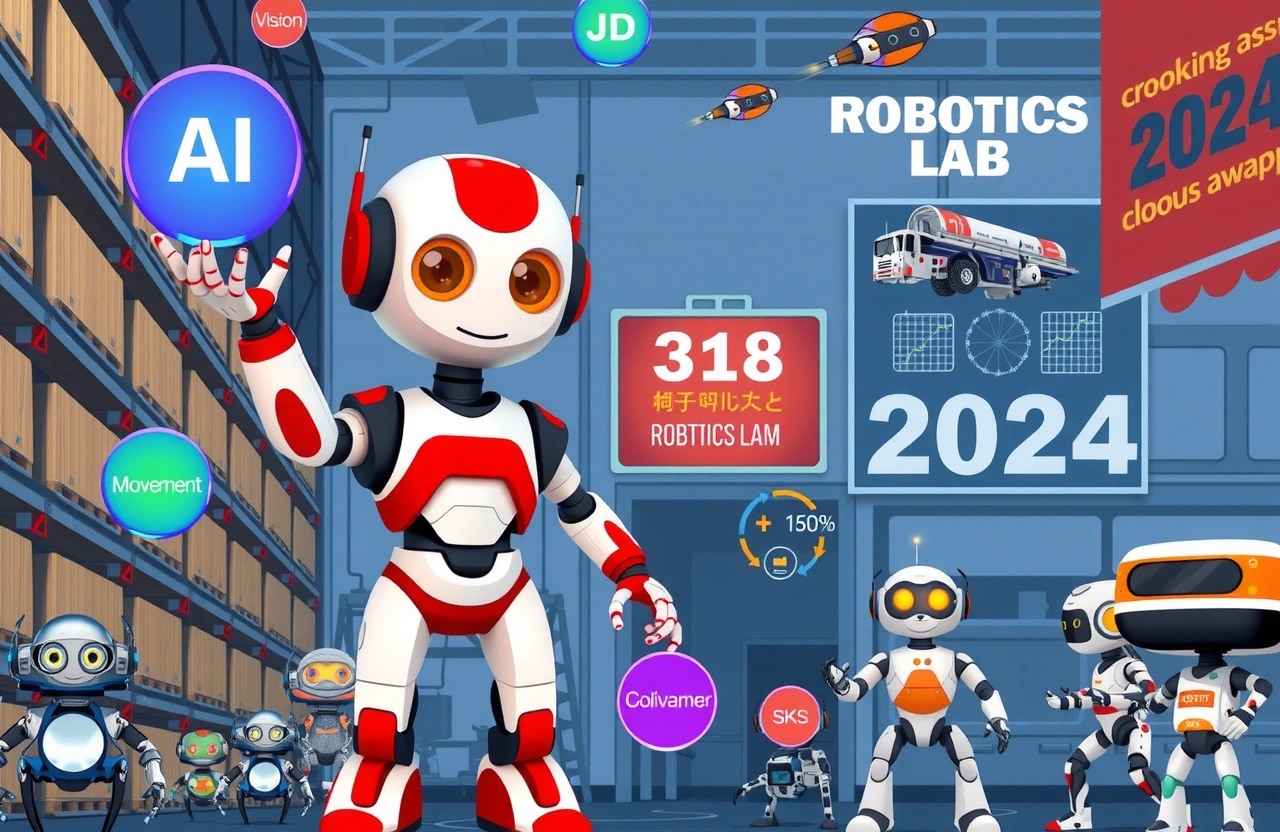– JD.com announces major investments in Qianxun Intelligence, LimX Dynamics and Zhongqing Robotics
– Company confirms embodied intelligence as core strategic focus for supply chain innovation
– Robotics department established with open access to JD’s logistics/retail/industrial scenarios
– Consumer robotics expansion underway through JoyInside partnerships with top hardware brands
– Experts highlight integration challenges despite JD’s operational advantages
The July 21st triple investment announcement marks JD.com’s most concentrated push yet into China’s competitive robotics landscape. Simultaneously leading funding rounds in Qianxun Intelligence (600M yuan Pre-A+), LimX Dynamics, and Zhongqing Robotics, the e-commerce giant signaled its transformation from technology user to industry catalyst. A company spokesperson emphasized to First Financial Journal that embodied intelligence—the integration of physical robots with large language models—now anchors JD’s innovation strategy, with planned infrastructure investments across supply chain ecosystems. This robotics investment spree builds upon May’s backing of AgiRobot and June’s establishment of a dedicated smart robotics division, positioning JD at the forefront of China’s automation race.
Robotics Investment Trilogy: Companies and Funding
Today’s robotics investment trifecta targets complementary capabilities in artificial intelligence systems:
– Qianxun Intelligence: Developing vision-based navigation systems for warehouse logistics
– LimX Dynamics: Specializing in legged locomotion systems for uneven terrain operations
– Zhongqing Robotics: Focused on collaborative robotic arms for manufacturing scenarios
According to Xu Lei (徐磊), head of JD’s 3C Smart Robotics division, these firms will gain priority access to JD’s real-world testing environments including logistics centers, retail stores, and industrial facilities. This integrated validation approach aims to accelerate commercial deployment – a significant challenge in robotics development.
The Embodied Intelligence Strategy Blueprint
Beyond Capital
JD’s robotics investment approach extends beyond funding by leveraging:
– Data resources (including 2024’s dual-arm mobile robot operation dataset)
– Retail distribution (30+ embodied AI brands sold during 618 sales festival)
– Component ecosystem (sensors, joints, machine vision modules)
The company has established dedicated robotics labs focusing on human-robot interaction protocols and failure recovery systems – critical gaps in current industrial applications.
Consumer Robotics Expansion
Concurrently with industrial robotics investment, JD is advancing into consumer markets through JoyInside – its embodied intelligence software platform. By embedding conversational agents into robotic companions like CASBOT and Unitree robot dogs, JD transforms hardware into emotionally responsive products. Over ten partnerships with manufacturers enable these AI-powered personalities:
– Educational companions with age-appropriate teaching modes
– Elderly care assistants with medication reminders
– Entertainment robots integrating gaming interfaces
A prototype lounge featuring these systems appeared at JD’s Beijing headquarters ahead of possible 2025 WAIC exhibition.
The Ecosystem Advantage
Natural Testing Ground
Yuan Shuai (袁帅), Deputy Secretary-General of Zhongguancun IoT Industry Alliance, observes: “JD’s operational scale provides unparalleled validation environments unavailable to pure R&D labs. Warehouse robots must navigate over 200,000 SKUs during live operations – failure rates in such scenarios expose weaknesses invisible in laboratory settings.” Consequently, JD’s robotics investment partners gain access to performance validation impossible to replicate elsewhere.
The Scalability Challenge
But Yuan offers caution: “The robotic technology journey spans research breakthroughs, engineering refinement and mass deployment. Bridging these stages demands specialized competencies beyond JD’s core retail strengths.” Success requires developing:
– Technology scouting frameworks identifying promising research
– Standards for modular interoperability between systems
– Scalability testing protocols verifying cost efficiency
Integrating robotics investment with technological gestation periods remains JD’s biggest strategic adjustment.
Roadmap to Innovation
JD’s historical automation milestones reveal deliberate progression:
– 2018: Automated sorting centers handling 160,000 packages daily
– 2020: First driverless delivery trials in Changsha
– 2022: Warehouse IoT systems tracking 98% inventory automatically
– 2024: Dual-arm robot public dataset release
Today’s robotics investment leap represents phase two – externally deploying those capabilities across China’s industrial landscape.
The integrated approach positions JD uniquely against competitors like Alibaba Cloud’s ET Brain and Tencent’s Robotics X Lab. While these focus primarily on industrial automation, JD’s fusion of logistics scenarios, retail access and emotional AI contains broader market applicability. Experts describe JD as creating “robotics supermarkets” where manufacturers select components, validation environments and distribution channels from one ecosystem.
This robotics investment surge prompts crucial questions: Can e-commerce giants successfully nurture the extended timelines of hardware innovation? Will academic breakthroughs thrive when grafted onto demand-driven enterprises? JD’s enterprise requires balancing impatient capital allocations with patient technology incubation – quantities rarely compatible. For investors tracking China’s automation surge, JD’s emerging dual-track strategy (industrial + consumer robotics) offers the most comprehensive test case for tech-to-market scalability. Monitor quarterly partnership announcements examining prototype graduation rates beyond initial funding rounds – true metrics validating this audacious robotics investment strategy.




